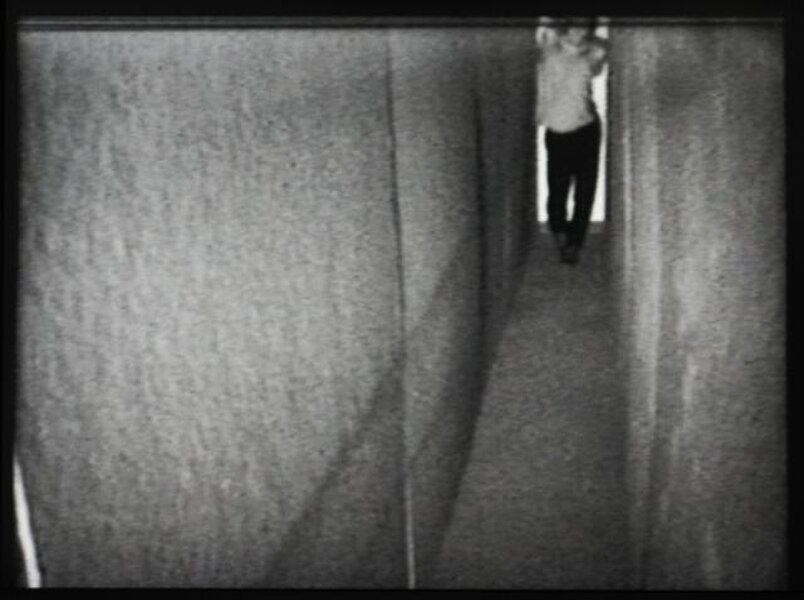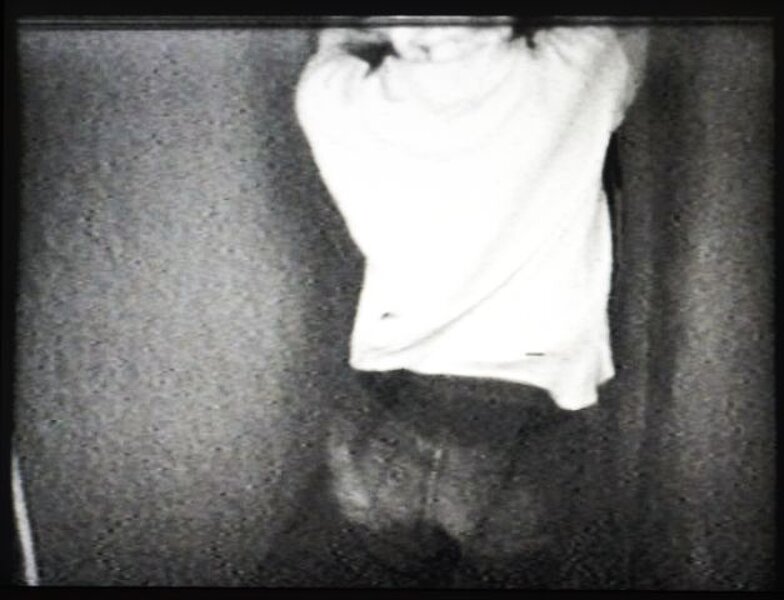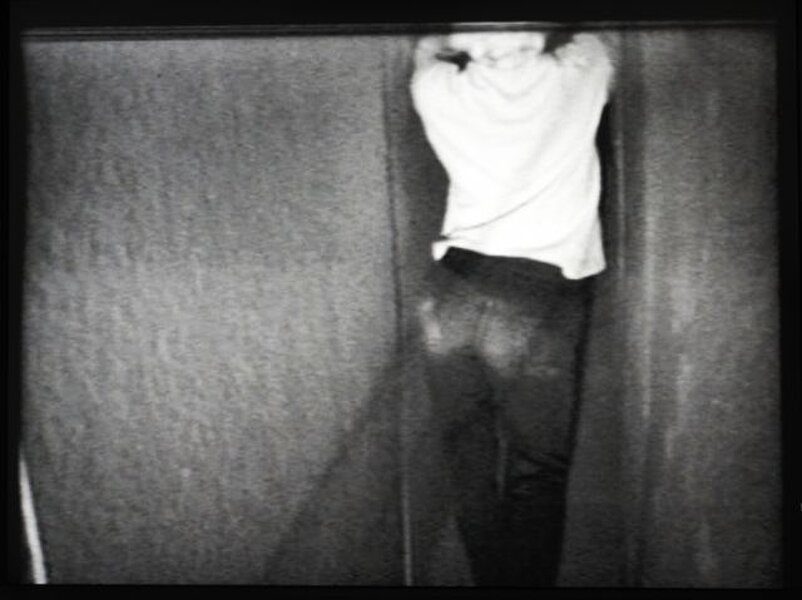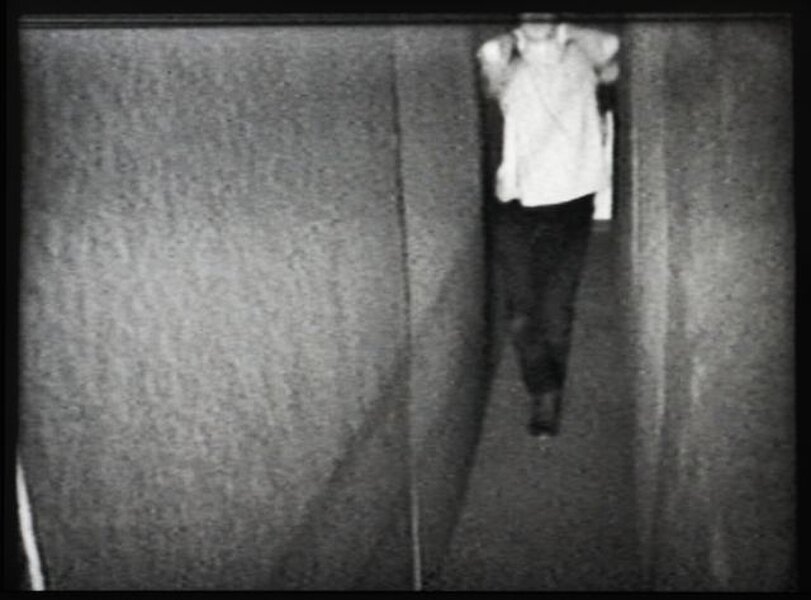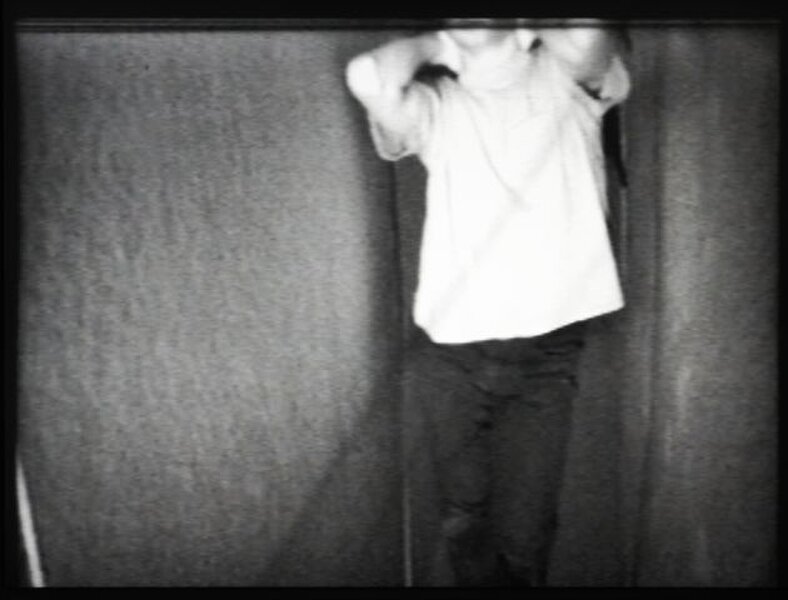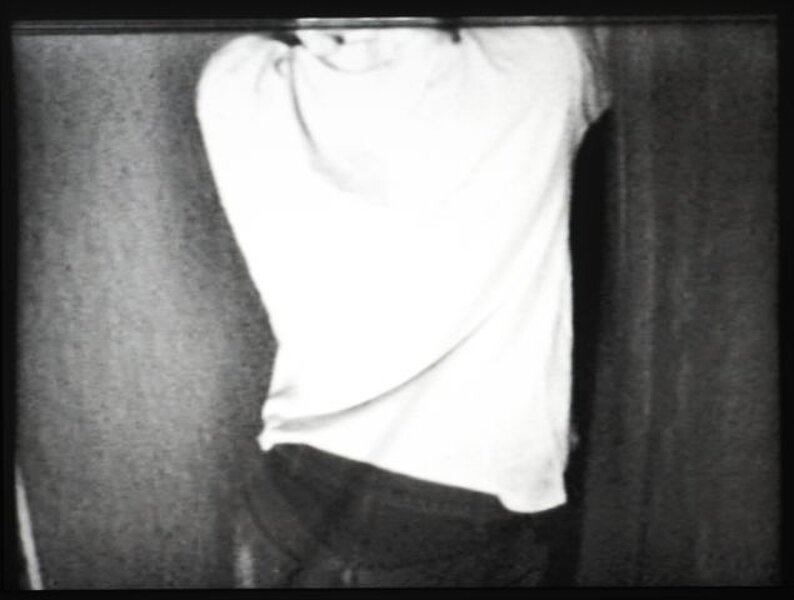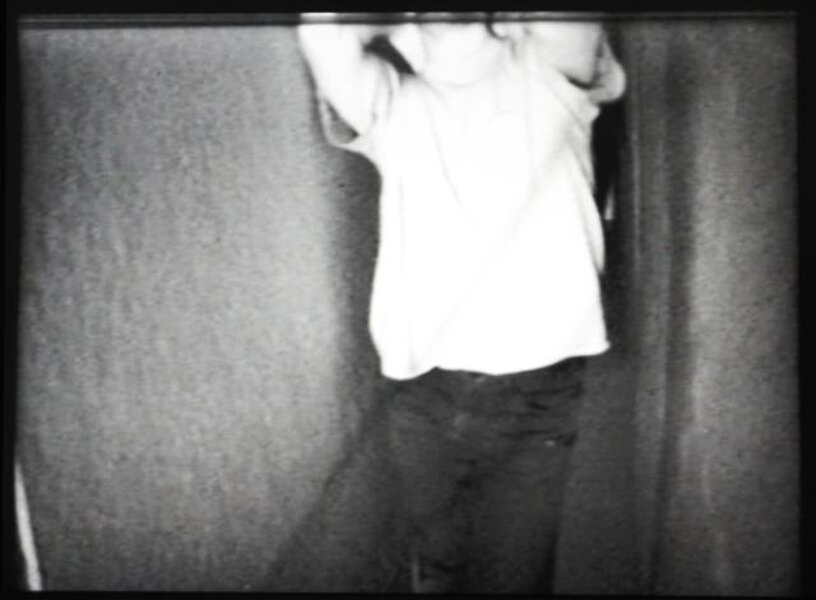
Nauman, Bruce
Walk with Contrapposto
1968
| Object description | 16mm film transferred to DVD, b/w, sound, 54 min |
|---|---|
| Object category | Medien-Video |
| Year of acquisition | 2005 |
| Inventory number | AV 155/0 |
| Creditline | mumok - Museum moderner Kunst Stiftung Ludwig Wien |
| Rights reference | Bildrecht, Wien |
| Further information about the person | Nauman, Bruce [GND] |
Bruce Nauman is walking. Slowly, he puts each foot forward, and the only thing we can hear is the sound of his steps and the crunching of gravel on concrete. For almost an hour, we watch him walking up and down a small corridor. He is holding his arms strangely above and behind his head. His rhythm is always the same, as he takes a step and pauses, taking on the post of classical Greek statues—the contrapposto. The leg he is standing on bears the weight of his body, while his other leg is slightly bent. The concept derives from the Italian word for “opposite.” The idea behind this pose is to achieve a harmonic balance for the standing human figure. Between each new step, the artist becomes a standing image of himself. Again and again, with no variation, he seems to be forced to adopt this somewhat exaggerated contrapposto. In this work by Nauman, there is nothing of the idea of harmonious ease expressed in ancient and Renaissance sculptures. His long walk seems to be leading nowhere and all that remains is to stay in this oppressive space with no exit. To make this black-and-white film, in 1968 Nauman built a corridor about 50 cm wide into his studio in Southampton in England. This was just wide enough for him to assume the contrapposto pose without his hips touching the walls but not generous enough for him to move his arms with ease. Nauman placed his 16mm camera so that his face was not clearly visible—our focus is on the movements of his body—again and again. He himself said: “Yes, the inability to develop, to change yourself, this feeling of not being able to get away from yourself, plays a role in many of my videos. I do not know where that comes from. Some of it probably from music, from people like Phil Glass, Steve Reich, and La Monte Young, whose endless music always fascinated me.”
© mumok – museum moderner kunst stiftung ludwig wien
